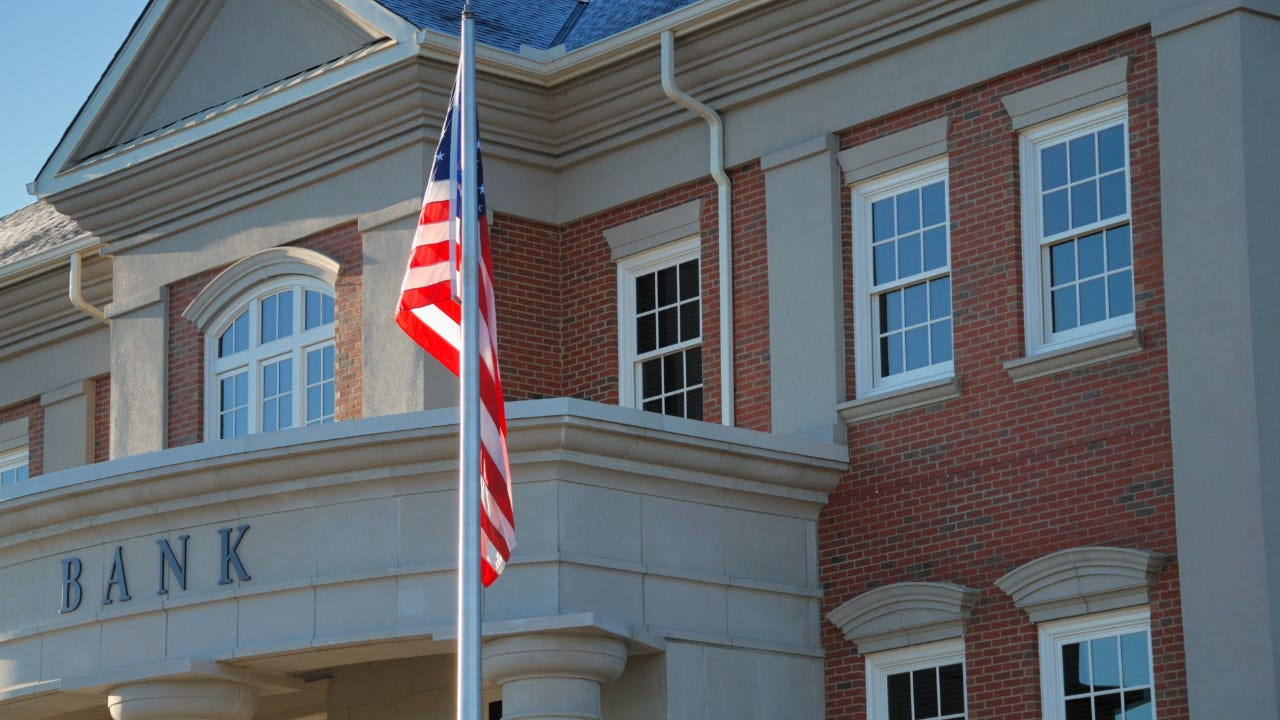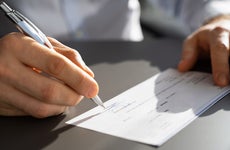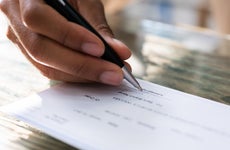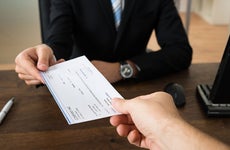What is a certified check? Definition, uses and cost

The Bankrate promise
At Bankrate we strive to help you make smarter financial decisions. While we adhere to strict , this post may contain references to products from our partners. Here's an explanation for .
Our writers and editors used an in-house natural language generation platform to assist with portions of this article, allowing them to focus on adding information that is uniquely helpful. The article was reviewed, fact-checked and edited by our editorial staff prior to publication.
A certified check is often used for a large financial transaction and is considered a more secure form of payment compared with a personal check.
Whether you’re buying a car or closing on a house, understanding the ins and outs of a certified check can help you make informed decisions when it comes to your finances. Here’s a breakdown of the basics of a certified check, including what it is, its uses and its potential risks.
Key takeaways
- A certified check is a personal check that has been verified by a bank.
- A certified check is typically used for a large financial transaction or in a situation when the buyer and seller hasn’t conducted business with each other before.
- It can be more expensive than other payment options and may not be offered by all banks.
What is a certified check?
A certified check is a personal check that an account holder’s bank has confirmed is backed by sufficient funds and bears a legitimate signature.
The amount of money on a certified check is earmarked solely for the payment of that check. The bank stamps the check or adds some other marking to indicate that it is certified.
That’s why a certified check is considered an “official check.”
When to use a certified check
Certified checks are typically used in large-dollar transactions, such as a down payment on a car.
They are also used in transactions when the buyer and seller don’t know each other. If you’re buying an expensive item from an online marketplace, a certified check guarantees a seller that you have adequate funds for the purchase.
A standard check doesn’t offer that assurance.
How much does a certified check cost?
A certified check will cost more than some other payment options. While personal checks typically cost a few cents each, you can expect to pay $15 to $20 for a certified check.
Not only are certified checks more expensive, but it is also difficult to find a bank that offers them. Many banks sell cashier’s checks and money orders, but not certified checks. Even big, traditional banks tend not to offer them.
“They’re a feature that banks offer to their customers, but they’re not as readily used, historically, as cashier’s checks (or) money orders,” says Ben Craigie, a vice president of the Massachusetts Bankers Association. “There’s just some banks that don’t have that service.”
If you need an official check, inquire at your bank about the payment options it offers.
Certified check vs. cashier’s check: What’s the difference?
The terms “certified check” and “cashier’s check” are often used interchangeably, but they are not the same thing. A certified check is drawn against the bank customer’s account; a cashier’s check is drawn against the bank’s funds.
“Certified [checks] kind of fall into that same umbrella as cashier’s checks in the sense that they’re both considered official check instruments,” says Craigie.
A certified check is a personal check from an account that has been certified by a bank. The bank certifies that the account holder’s signature is authentic and that the amount of money needed to make the transaction is in the account and has been set aside for the payment of the check. A signature, stamp or some kind of marking shows that the check is certified.
With a cashier’s check, the bank withdraws the money from your account and issues you an official bank check made payable to the person or business you are transacting with. The money is guaranteed by the bank, using its funds. Usually, the bank prints the name of the payee on the cashier’s check before it’s issued.
How to protect yourself from fraud
A legitimate certified check is as good as cash because the bank has verified the signatory’s account and signature and set aside the funds to pay it.
Even though a certified check is a more secure payment instrument than a standard personal check, counterfeits are possible.
When it comes to official checks, which covers certified checks and cashier’s checks, trust but verify, Craigie advises.
To protect yourself against fraud, ask the bank that certified the check to confirm that it’s authentic. “You can always call the bank that the check is drawn on and verify the legitimacy of the item in your possession,” Craigie says.
Don’t call a phone number that’s on the check, Craigie says. Instead, verify the bank’s phone number on your own. Go to the bank website, visit a branch office or use some other official method.
Bottom line
A certified check is a reliable form of payment for large transactions as well as when dealing with unfamiliar parties. While it may be more expensive and not widely offered by banks, it guarantees that the funds are available and the signature is authentic. However, it’s important to remain cautious of potential fraud and verify the legitimacy of the check with the issuing bank.
— Bankrate’s René Bennett contributed to an update of this story.
Related Articles



What’s the difference between a cashier’s check and a certified check?

What is a cashier’s check? Definitions, uses, how to buy one, cost and alternatives